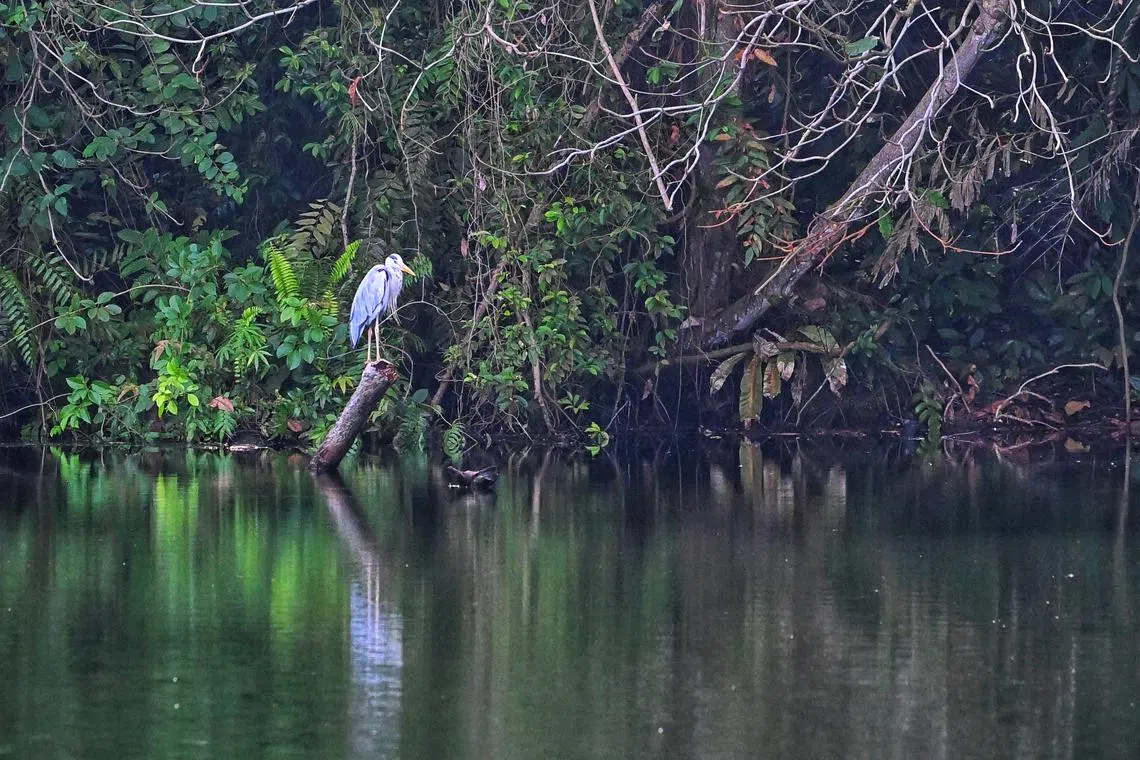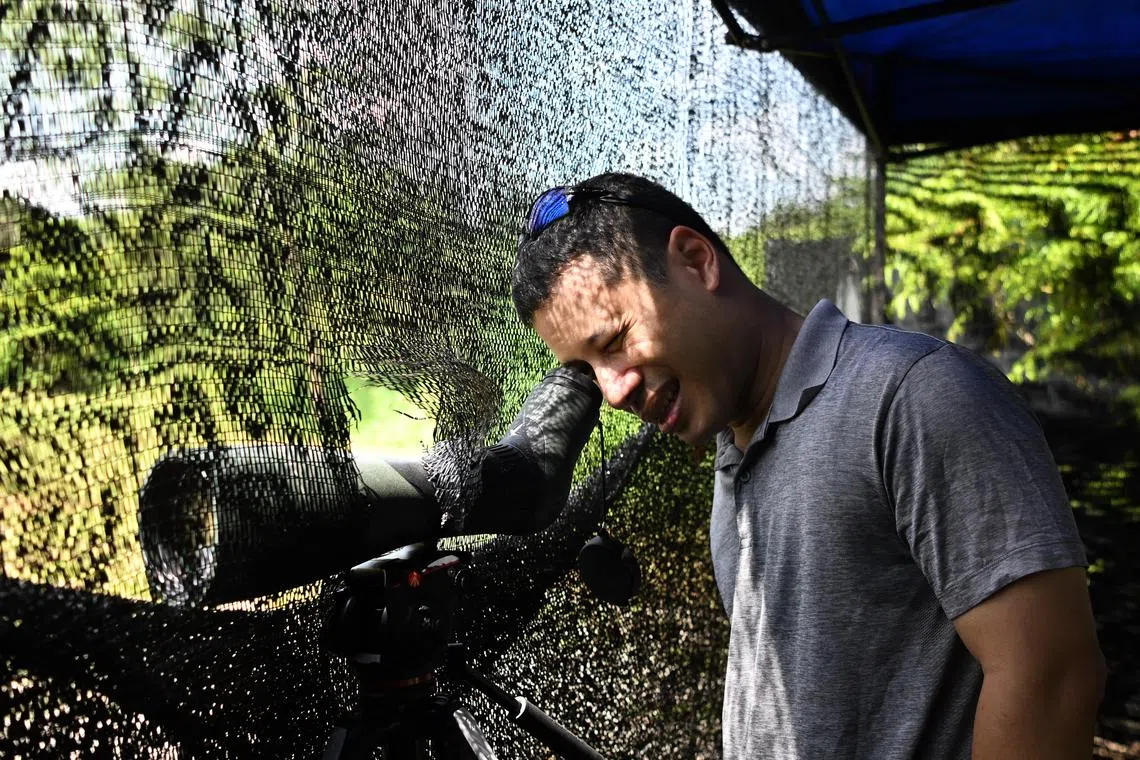Over 7,300 species assessed in latest report on conservation status of Singapore’s biodiversity
Sign up now: Get ST's newsletters delivered to your inbox

The third edition of the list is the most comprehensive yet, covering over 7,300 species from 33 different taxa, or groups of species.
ST PHOTO: CHONG JUN LIANG
SINGAPORE - While it resembles the blood-drinking vampire bats in South America, the lesser Asian false vampire bat native to Singapore has a less fearsome reputation and does not drink blood.
Instead, the nocturnal animal feasts on insects like mosquitoes, as well as smaller bats. Found on Pulau Ubin and Pulau Tekong, the bat was previously considered to be critically endangered.
Today, it is less at risk of extinction due to conservation efforts by the National Parks Board (NParks).
Under the species recovery programme introduced in 2015, the agency constructed bat houses with rough surfaces that the bats can grip on around Pulau Ubin to supplement their available roosting sites.
The mammal is among more than 560 species whose conservation status has improved in the third and latest edition of the Singapore Red List, an authoritative reference for the conservation status of Singapore’s biodiversity. Other species doing well include the grey-headed fish eagle, the sunda slow loris and the golden royal butterfly.
The list’s completion was announced by Minister for National Development and Minister-in-charge of Social Services Integration Desmond Lee at Ubin Day 2023 held on Pulau Ubin on Saturday.
The third edition of the list is the most comprehensive yet, covering over 7,300 species from 33 different taxa, or groups of species. This is more than double the 2,900 species assessed in the second edition released in 2008. Seven main taxa were also assessed for the first time.
Mr Lee said that the list has been an invaluable resource in guiding nature conservation strategies across Singapore.
“NParks takes reference from the Red List in planning, prioritising and implementing conservation efforts for species that are native, rare or critically endangered,” said Mr Lee.
The new edition was put together by NParks, a multidisciplinary group of taxonomic experts from the Lee Kong Chian Natural History Museum at the National University of Singapore and Nature Society (Singapore).
With growing interest in biodiversity and conservation, the tripartite team was able to tap a larger pool of experts to cover the majority of species found in Singapore, said Mr Lim Liang Jim, group director of conservation at NParks.
A total of 120 experts contributed to the list, compared with 64 contributors for the second edition.
Assessments for the list were carried out between mid-2019 and 2023, and the preparation included a collection of field samples, laboratory work, analyses and discussions with experts.

The list’s completion was announced by Minister for National Development and Minister-in-charge of Social Services Integration Desmond Lee at Ubin Day 2023 held at Pulau Ubin.
ST PHOTO: CHONG JUN LIANG
Mr Lim said that the Red List also allows NParks to learn from what they had done correctly. “We do not rest on our laurels, and we use the improved conservation status of certain species to understand and analyse the reasons why they have been doing better. If they are doing well because of a certain suite of interventions, then we can do more of it.”
For species that are uplisted, which means they are at greater risk of extinction, NParks can now focus on what it can do to improve their lot, added Mr Lim.
About 300 species have been uplisted in the latest edition, and this includes the Malayan horned frog, which has moved from being endangered to critically endangered, and the grey-headed swamphen, which has moved from near threatened to critically endangered.
Also held in conjuction with Ubin Day 2023 was a learning symposium for the local teaching fraternity to highlight the island’s potential as a classroom set in nature for interdisciplinary and experiential learning.
Close to 40 participants, including school principals, heads of departments and teachers, as well as key staff from the Ministry of Education, went on guided walks around Pulau Ubin and participated in discussions.


